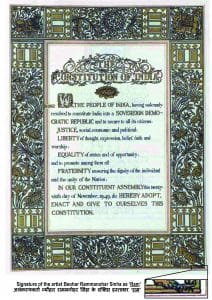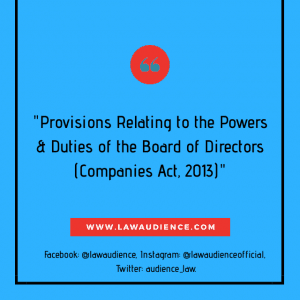GENERAL DEFENCES UNDER LAW OF TORTS[1]
EDITOR’S NOTE:
In this short article the author has explained following General Defences available under the Law of Torts namely, a) Volenti Non-Fit Injuria, b) Inevitable Accident, c) Necessity, d) Private Defence, e) Plaintiff a wrongdoer.
INTRODUCTION
Law of torts is derived from the Latin word “Tortum” which means “twisted”.[2] It indicates acts which are twisted or crooked. Thus, it is a breach of duty created by law or by other authority that amounts to a civil wrong, violating a legal right. There are three main characteristics to constitute the law of tort against any person; firstly, there must be a legal right which is violated by a wrongful act or omission. Secondly, the wrongful act of a person should render the violation of the legal right. Thirdly, there is a legal remedy for the damages caused by the violation of legal right. The burden of proof lies on the plaintiff, to state that there exists a legal right which has been violated by the wrongful act or omission of defendants. Thus, the defendants cannot discharge themselves from their liabilities under the Law of Torts. But, under the ambit of general defences, the defendants can be absolved from their liabilities.
GENERAL DEFENSES
VOLENTI NON-FIT INJURIA
“Volenti Non-Fit Injuria” is a Latin maxim which implies when the plaintiff is willing to suffer the injuries caused by the defendants and willful consent is given by the plaintiff to incur the harm. The essentials when the plaintiff has consented to the act voluntarily for which he has the knowledge that the defendant’s actions might cause harm or damage. ‘Volenti Non-Fit Injuria’ is a good defence and can absolve the defendants from their liability. The principle is founded on good sense and justice in which the one who has assented to the act which, otherwise, would be actionable will not be held liable if suffers any damage[3]. For instance, in the case Hall v. Brookland Auto Racing Club[4], the plaintiff was a spectator at a motor car race being held at Brookland, a track owned by the defendant company. During the race, there due to a collision between two cars one of which was thrown among spectators, causing injuries to the plaintiff.[5] The court held that the plaintiff had given the consent voluntarily and had the knowledge of the risk involved. So, the defendants were not held liable.
INEVITABLE ACCIDENT
Inevitable accident refers to the accidents which cannot be avoided by both the parties by any degree of care, caution and skill. The occurrence of an event which is not foreseeable and could not be avoided despite of all care and attention can discharge defendants from their liabilities.
Inevitable Accident can be classified into two types:
- Those which arise out of the natural forces and not through the acts of humans or man. Such acts are known as Vis Major or Act of God.[6] These include catastrophe such as earthquake, floods, droughts etc.
- Those which have their origin from the human agency which includes the accident which arises out of misfeasance, nonfeasance and malfeasance. For instance, bursting of a tire of a moving car even after proper maintenance, which in turn hurts the plaintiff, the defendant can claim the defence of inevitable accident.[7] The plaintiff was carrying cartridge in a shooting party where they had gone pheasant hunting. The defendants fired shot at a pheasant but the bullet after hitting the tree rebounded back and hit plaintiff in his eye. When the plaintiff sued the defendant for damages, the court held that it is a case of an inevitable accident where it was not possible for the defendant to foresee the event despite of due diligence and care.[8]
NECESSITY
The defence of Necessity is based on the principle “Salus Populi Suprema Lex” which means the welfare of the people shall be the supreme law. The principle has been laid down to avoid the bigger in lieu of the lesser harm caused by the action of parties. The doctrine of necessity is confined within very narrow limits i.e. the act that has been done must be urgent and transient in nature. In a landmark case R v. Dudley and Stephens[9], in the present case, the court held that killing of a person in order to survive is not avoiding of greater harm. Hence, the defence of necessity will not be granted.
PRIVATE DEFENCE
Law has given every individual a right to protect their property, family and themselves from unlawful harm through a reasonable force. The right of private defence was constituted to enable the plaintiff to guard himself against imminent danger or threat or unlawful use of force by the defendants, by use of reasonable force for his self-defence. The essentials to claim for the right to private defence are[10]–
- The force used by the defendant must be proportional to the apparent urgency of the situation[11]
- The threat must be immediate and,
- The defendant must not have an opportunity to reach out to the authorities.
In the case, Morris v. Nugent[12], the defendant was passing by the plaintiff’s house, the plaintiff’s dog in a rage bit the defendant. The defendant in private defence raised his gun to shoot the dog but the dog ran away and he still shot the dog. The plaintiff sued defendants for damages, the defendant pleaded for the right of private defence. It was held that the defendant was not justified in doing the act, as the dog was running away and there was no imminent danger or threat to the defendant.
PLAINTIFF A WRONGDOER
The principle is based on the Latin maxim “ex turpi causa non ortitur actio”[13] which means “damages cannot be recovered for an act or conduct by which plaintiff himself is a wrongdoer”. In some cases, the plaintiff cannot seek for a legal remedy as the damages suffered, was a result of his own act. In the case Pitts v. Hunt[14], a rider, 18 years encouraged his friend, 16 years to drive recklessly at a high speed after they both had been drunk. The motorbike met with an accident resulting into death of the driver and rider suffered severe injuries. The plaintiff claimed compensation from the defendants, thus, the court held that the plaintiff was himself a wrongdoer in driving the bike recklessly after getting intoxicated voluntarily.
[1] Authored By: Mr. Pranav Tomar, B.A.LL.B, 1st Year Student at Rajiv Gandhi National University of Law & Research Writer at Law Audience: Edited By: Ms. Sonal Gupta, B.A.LL.B, 2nd Year Student at Symbiosis Law School, Hyderabad & Assistant Editor at Law Audience.
[2] Dr. N.V. Paranjape, LAW OF TORTS CONSUMER PROTECTION LAW & COMPENSATION UNDER OTHER STATUTORY LAWS, 9-10 (3rd ed. 2016).
[3] Smith v. Baker & Sons, AC 225 (1891).
[4] 1 KB 205 (1993).
[5] supra note 1.
[6] Nugent v. Smith, 7 CH D 815 (1876).
[7] Ratanlal & Dhirajlal, THE LAW OF TORTS (26th. 2013).
[8] Stanley v. Powell, 1 QB 86 (1891).
[9] 14 QBD 273 (1884).
[10] supra note 6.
[11] Reece v. Taylor, 4 N&M 469 (1835).
[12] 7 C&P 572 (1836).
[13] Godbolt v. Fittock, SR (NSW) 617 (1963).
[14] 3 All ER 344 (1990).



